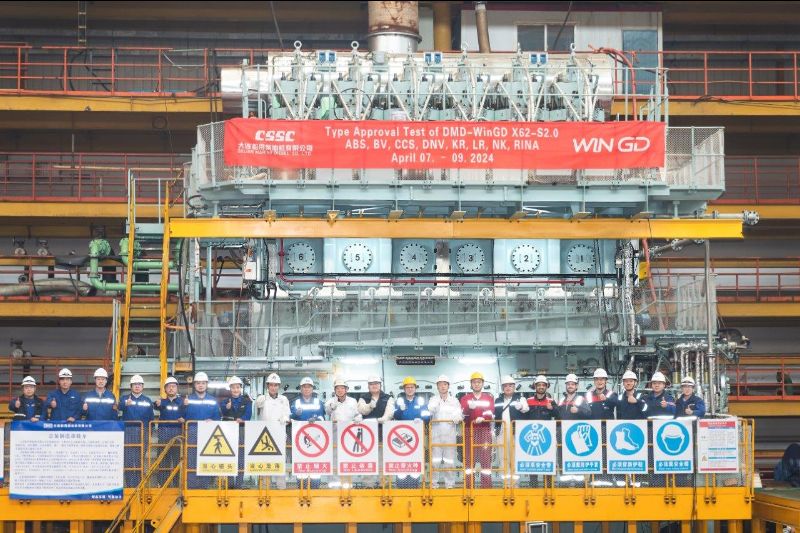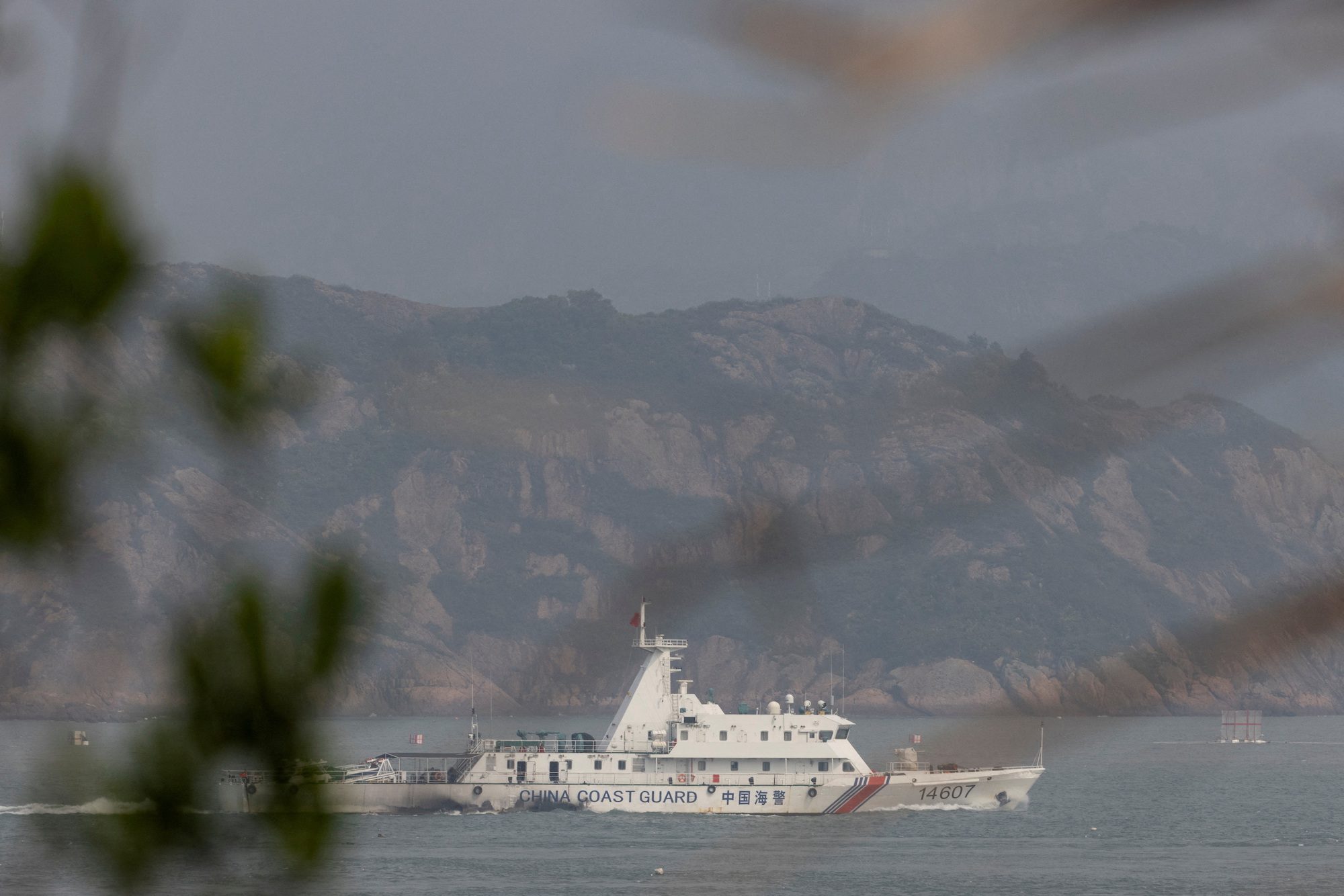
Wide-Roaming Chinese Fishing Vessels a Cause for Concern
By Chuin-Wei Yap And Sameer Mohindru
China’s growing hunger for seafood is testing relations with other countries and worrying foreign officials and scientists over the potential damage its massive fleet could do to global fishing stocks.
In the latest example, Argentina reported on Wednesday that it had captured on Monday two Chinese fishing vessels that it said were illegally fishing in its waters. Officials noted that Argentina’s coast guard boarded the ships after firing warning shots to prevent them from fleeing to international waters, and that the vessels were carrying 10 metric tons of squid and fish.
Argentina authorities say the Chinese ships were intercepted off Patagonia, two nautical miles inside Argentina’s 200-mile exclusive economic zone, on Monday. A federal judge is questioning the ship captains, officials said. In a statement, China’s Foreign Ministry said it is trying to verify the facts of the case.
The episode comes as China’s fishing boats increasingly find themselves embroiled in both cross-border and commercial disputes. Chinese ships fish in both international waters and under bilateral fisheries agreements in the waters of other nations. They work for largely private companies or for themselves, and aren’t generally directed by Beijing.
However, in Asian waters, fishing boats have become a proxy for China’s sovereign reach in largely territorial spats. In cases farther afield, its fishing boats have been entangled in accusations of overfishing and harming local economies.
In recent weeks, South Korea seized a Chinese boat and detained 24 sailors for allegedly illegally fishing in the Yellow Sea. Vietnam has accused Chinese fishing boats of cutting its gas-exploration cables at sea. Chinese fishing boats have also sailed around the disputed island chain known as Senkaku in Japan and Diaoyu–which means “fishing” in Chinese–in China, contributing to worsening relations with Tokyo.
Official data projects that China, the world’s largest seafood consumer, is on track to produce more than 60 million tons of seafood by 2015, up from 53.7 million tons two years ago. Some foreign officials question Chinese catch reports and believe total production may be even higher.
Investment bank Rabobank estimates that seafood imports to China–where consumers have for centuries considered fish beneficial to the brain–will total $20 billion by the end of the decade from around $8 billion currently.
Beijing has big plans for expanding its fishing armada to feed that appetite, aiming to increase its long-range fishing fleet by 16% by the end of 2015 to about 2,300 ships compared with 2010. By comparison, the U.S. distant-waters fishing fleet totals around 200 ships.
In a review earlier this year, a congressional agency set up to explore the national-security implications of U.S.-China economic relations said China’s growing fleet has “global implications.”
“China, in particular, uses the resources of its five maritime security agencies to enforce its claims in disputed waters, by escorting Chinese fishing vessels and enforcing seasonal fishing bans on foreign vessels,” Commissioner Daniel Slane said at a hearing in January. “These civilian fleets allow Beijing to maintain a maritime presence in disputed waters without having a consistent or overt naval presence.”
China’s Foreign Ministry referred questions to the Agriculture Ministry, which didn’t respond to faxed questions and declined to comment in a telephone call. China has said it has sovereignty over the South China Sea and the Diaoyu islands and therefore has the right to escort its fishing vessels there.
The territorial issues and environmental concerns echo the tensions China has faced in a number of industries, from energy to mining to agriculture, as it looks for raw materials to feed its growth. China has moved aggressively in recent years to purchase resources abroad to bolster its energy, minerals and food security, adding needed investment to increase global supplies but raising worries in Washington and elsewhere about China’s sway.
China’s hunger is growing at a time when around 87% of global fisheries are seen to be at full exploitation, over-exploited, or depleted, according to the United Nations’ Food and Agriculture Organization. China like other nations has signed international agreements that allow it to fish in global waters, and some fishing experts have praised Beijing for beefing up its statistics on fishing in some areas and for raising more fish in domestic farms.
Still, a European Commission report this year said China reported just 368,000 tons of its 2010-2011 catch from the high seas compared with an estimated actual haul of 4.6 million tons.
Africa–where local governments often have few resources to police opaque bilateral water-access agreements to make sure vessels pay for what they catch–accounts for more than two-thirds of China’s long-haul harvest, the report said.
The situation is made more murky by a lack of regulation in China, said Tabitha Grace Mallory, an industry expert with the Johns Hopkins School of Advanced International Studies. “One of the big problems on China’s domestic front is lack of capacity and resources in the fisheries bureau, and less control and law-enforcement ability over increasingly private Chinese fishing companies who disobey rules,” she said.
China’s fishing vessels are being drawn ever farther afield because overfishing in neighboring waters, including around North Korea, Indonesia and Myanmar, has led to falling production in Asian waters, according to an essay from China’s agriculture ministry.
In comparison, the ministry said, the catch from West Africa rose 14% in volume and 41% in value last year from 2010. In Mauritania alone, the catch rose 51% in volume and 66% in value over the period, it said. In Morocco, catch values rose 50% despite a smaller volume due to a shortened fishing season.
Peru, a major source of seafood for China, has slashed its global commercial fishing quota for anchovy during the Nov. 22-Jan. 31 season by 68% to a 25-year low of 810,000 tons because of depleted stocks. Anchovy is processed into fishmeal, of which Peru is the largest exporter and China the main buyer.
“There is still a large scope to expand Peru’s trade with China in future, but we also want to conserve marine resources,” said Peru’s ambassador to China, Gonzalo Gutierrez.
(c) 2012 Dow Jones & Company, Inc.

Subscribe for Daily Maritime Insights
Sign up for gCaptain’s newsletter and never miss an update
— trusted by our 109,183 members

Get The Industry’s Go-To News
Subscribe to gCaptain Daily and stay informed with the latest global maritime and offshore news

 Join The Club
Join The Club








